At SIS Panels™️, we pride ourselves on our ability to assist builders and designers on creating custom building solutions that push the building envelope and increase project efficiency. All our products reduce the one to three of the required steps for the exterior construction process depending on the sheathing panel. However, we found ourselves asking:
What else can we do for builders? Can we add more layers of the EIFS to our SIS Panels?
After a thorough series of internal designing and testing, we are ready to unveil our latest innovation: the SIS Puck Rainscreen System™️. Integrated into the EPS Foam, our proprietary rainscreen gives builders the ability to install rainscreens in climates with significant moisture without additional labour or specialized design plans.
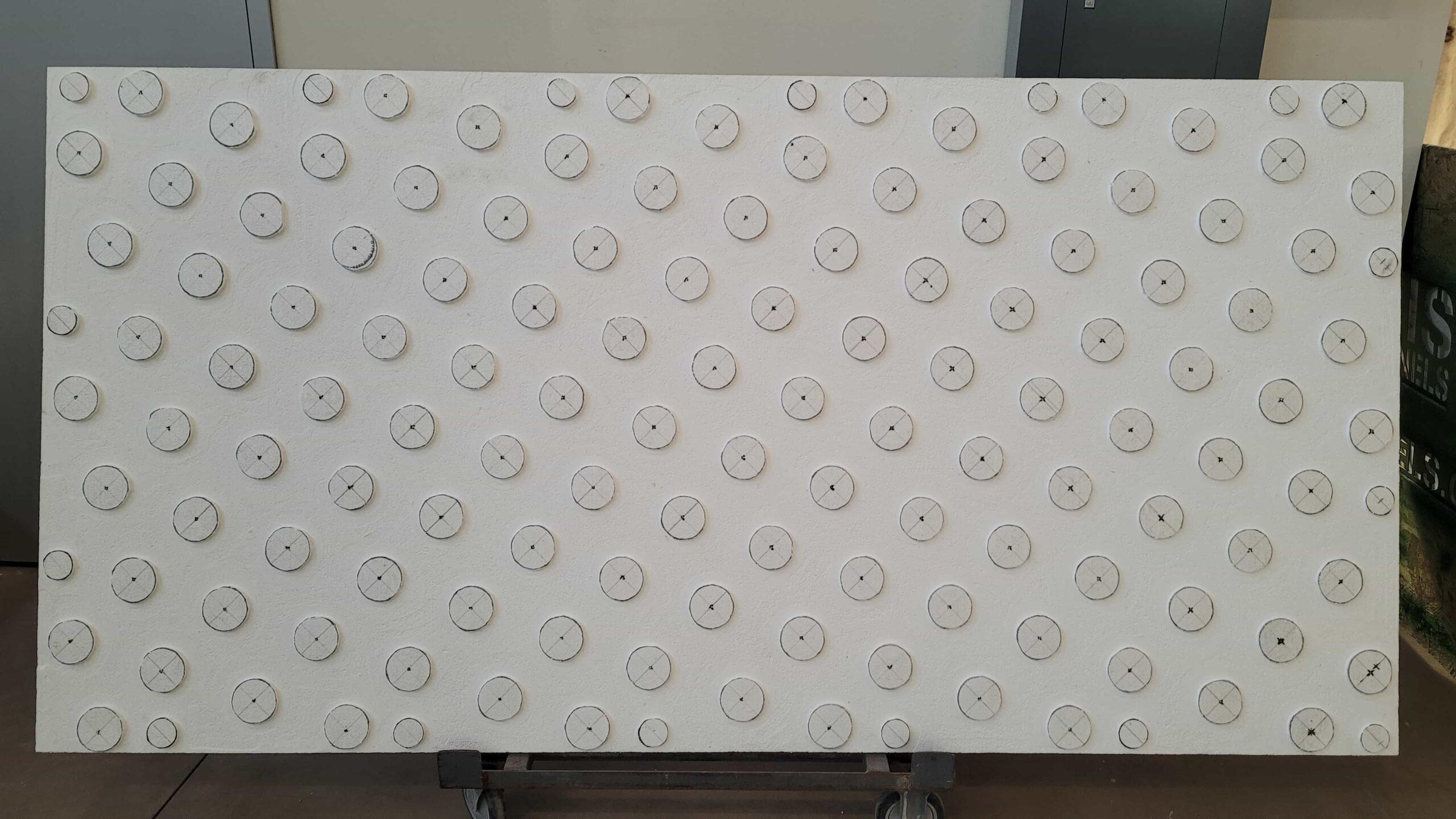
What is a Rainscreen?
A rainscreen is an exterior wall detail where the siding (wall cladding) stands off from the moisture-resistant surface of an air/water barrier applied to the sheathing to create a capillary break and to allow drainage and evaporation.”
To put it in simpler terms, a rainscreen is an air cavity in exterior walls that are designed to drain any moisture in the wall and to allow unimpeded air flow to make sure the wall can “breathe”.
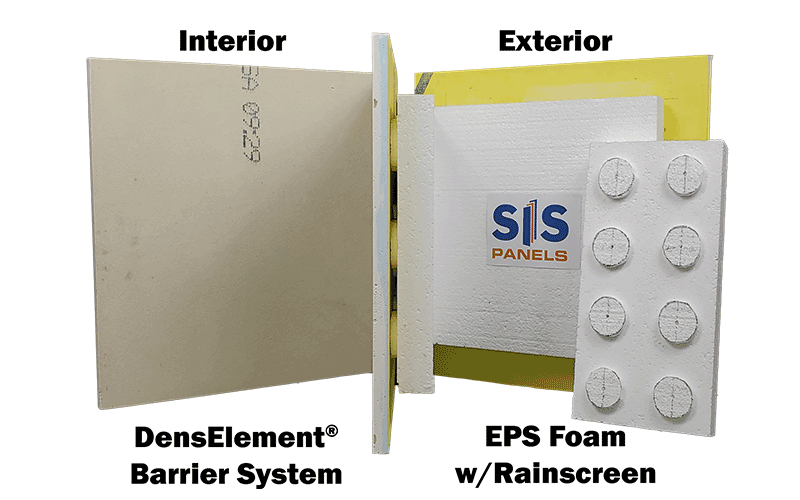
Our One-Sided EIFS SIS Panel with DensElement® Barrier System uses our SIS Puck Rainscreen System™️ to save builders time and money
A More Detailed Look
Many traditional rainscreen systems are designed with vertical channels to ensure proper moisture control in the exterior wall. These channels allow for air flow and moisture drainage within the wall.
This time-tested method works effectively but we wanted to go the extra mile. Our first goal was to ensure any moisture in the wall could drain effectively. Our second goal was the create an aerodynamic design to allow unimpeded air flow. As a result, we designed a “Puck” system that replaces the vertical drainage channels with circles throughout the rainscreen.

We chose to use circles in our rainscreen rather than drainage channels because circles ensure that no moisture can pool on the top of the circles. Additionally, circles allow for improved aerodynamics with similar airflow regardless of the direction.
The final step was to size the circles correctly to follow the 80% air space requirement dictated by the Building Code. When we came to our final design, we realized the size of the circles were familiar to something very Canadian – a hockey puck.
The Necessity of Rainscreens
Regions with heavy amounts of moisture and precipitation like coastal British Columbia (BC) require rainscreens to ensure that the building envelope of structures aren’t compromised. Did you know that Vancouver received six times more precipitation than Kelowna in 2021 (1,160.3 mm and 189 mm respectively)?
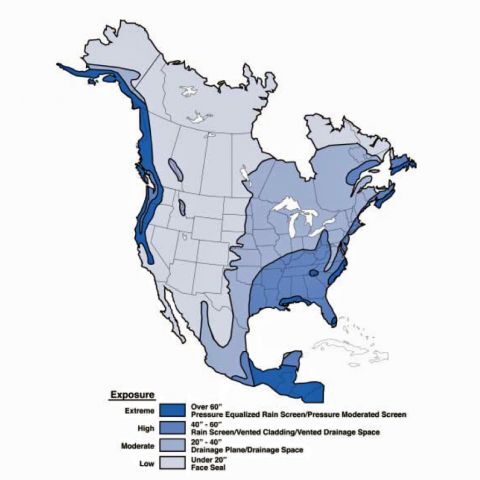
Our SIS Puck Rainscreen System™️ is designed for EIFS assemblies due to the fact moisture is unable to dry through the EIFS to the outside, making them unusable in climates with significant moisture. Stucco and EIFS were a common topic in the construction industry when the “Leaky Condo Crisis” in BC came to light.
In the 1980s, thousands of condo owners across coastal BC discovered that the building envelope of their condo had experienced a “catastrophic” failure and allowed moisture to penetrate the system and become trapped in the wall.
The Leaky Condo Crisis was the result of poor condo design, low-quality materials, and inexperienced companies building in a climate with significant moisture. It caused billions of dollars worth of damage and the full ramifications are still felt to this day.
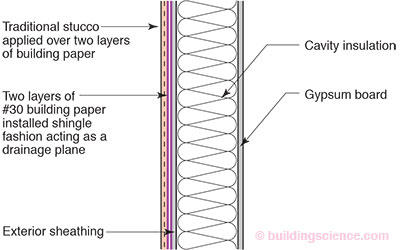
Traditonal Stucco. Image from BuildingScience.com
For more information on the Leaky Condo Crisis, check out our blog post
In the years since the Leaky Condo Crisis, several studies have been completed on rainscreen systems. A 5-year study between 2001-2006 on residential building envelopes in Vancouver highlighted the benefits of using an effective rainscreen in exterior wall assemblies. To read this report, visit ResearchGate.net
Rainscreen systems have been proven to be a necessary part of the building assembly in areas with heavy moisture. Due to this necessity, designers and builders must create specialized structure designs that are different from the structures they build in other parts of North America.
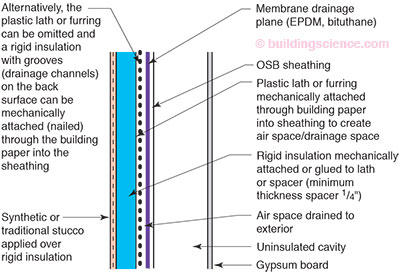
Drainable EIFS with Membrane Drainage Plane. Image from BuildingScience.com
Our SIS Puck Rainscreen System™️ was designed with the intention for builders and designers to be able to use the same structural designs regardless of the climate or moisture levels.
The SIS Puck Rainscreen System™️ is possible due to it being integrated into the EPS Foam without compromising the continuous exterior insulation while adhering to all building codes. The added benefit is that it can be installed just like any other SIS Panel or drywall panel.
